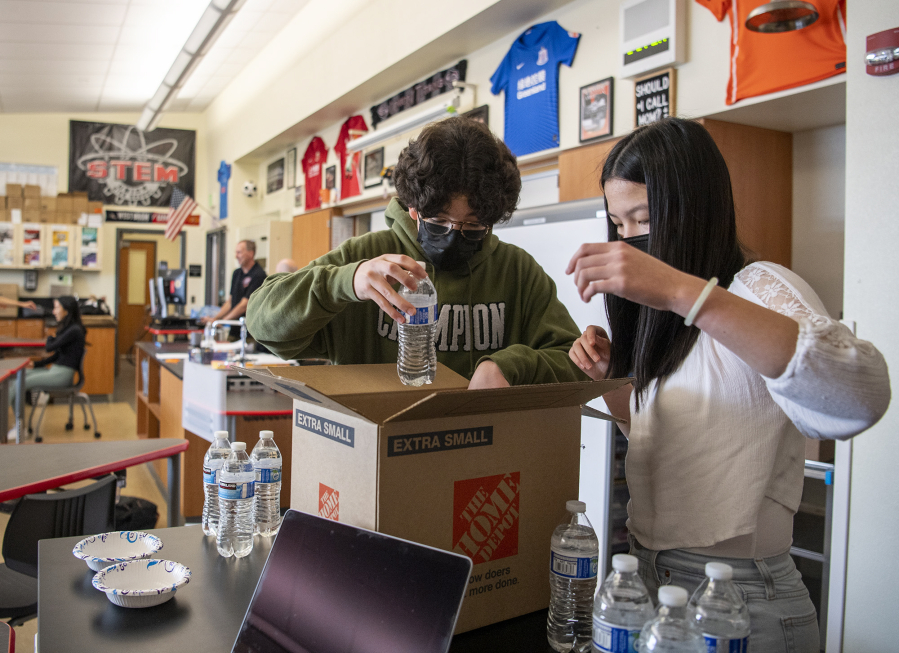Madison Kao adjusted the camera to best fit her soon-to-be homemade lava lamp into frame. She wanted to be sure each step of the assignment was clear enough to be easily replicated later.
A sophomore at Union High School, Kao is part of a group of student tutors who hold monthly tutoring sessions in science and math for elementary and middle school students across Evergreen Public Schools.




